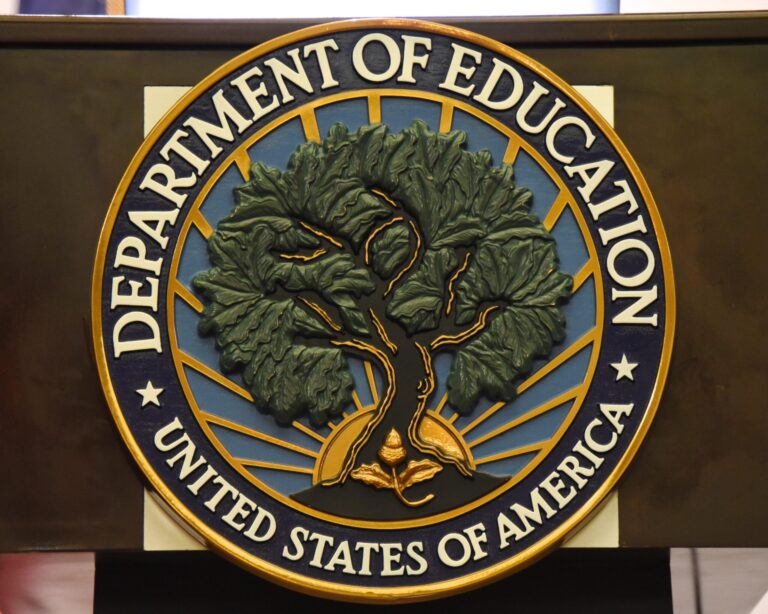How the U.S. Department of Education Shapes Educational Success in Texas
Federal Funding: A Cornerstone for Texas Schools
The U.S. Department of Education is instrumental in providing essential financial resources that empower Texas public schools to thrive. Through the distribution of federal grants and funding programs, the department supports districts statewide, with a particular focus on those serving economically disadvantaged populations. Programs such as Title I are designed to supplement state funding by targeting schools with a high concentration of low-income students, helping to close persistent funding gaps.
Beyond funding, the department establishes policy frameworks and monitors the effective and equitable use of these resources to ensure that every Texas student benefits. Key federal contributions include:
- Allocations for special education services tailored to students with disabilities.
- Competitive grants aimed at advancing STEM (Science, Technology, Engineering, and Mathematics) education.
- Emergency relief funding to address crises like natural disasters and public health emergencies.
- Support for college readiness and career technical education programs.
| Program | Texas Funding (FY 2023) | Primary Objective |
|---|---|---|
| Title I Grants | $2.3 Billion | Enhance resources for high-poverty schools |
| IDEA Special Education | $1.1 Billion | Support for students with disabilities |
| ESSER Relief Funds | $850 Million | COVID-19 recovery and mitigation |
Federal Initiatives Driving Student Achievement in Texas
The Department of Education’s programs are pivotal in enhancing academic outcomes and enriching the educational experience for Texas students. Title I funding, for example, provides critical supplemental support to schools with large populations of low-income students, enabling services such as literacy specialists, tutoring, and extended learning opportunities. The Individuals with Disabilities Education Act (IDEA) ensures that students with disabilities receive customized instruction and necessary accommodations, fostering an inclusive learning environment.
Additionally, the 21st Century Community Learning Centers program offers after-school enrichment activities that promote both academic growth and social development, while also providing safe spaces for students beyond regular school hours. The Federal Pell Grant program further supports Texas high school graduates by reducing financial barriers to higher education, encouraging greater college enrollment and completion rates. These federal investments empower educators and administrators to implement innovative strategies that elevate student success across the state.
Promoting Equity and Access in Texas Education
Ensuring equitable educational opportunities is a central mission of the U.S. Department of Education in Texas. By channeling federal funds and resources, the department assists districts in overcoming disparities related to socioeconomic status, disabilities, and language proficiency. Targeted grants enable schools to develop specialized programs, integrate advanced technology, and provide professional development tailored to diverse student needs.
Collaboration with state education agencies further strengthens these efforts by:
- Enforcing compliance with civil rights laws to prevent discrimination in schools.
- Supporting innovative projects aimed at boosting graduation rates in underserved areas.
- Encouraging inclusive curricula that reflect Texas’s rich cultural diversity.
- Expanding access to early childhood education and specialized services.
| Initiative | Benefit to Texas Students |
|---|---|
| Title I Funding | Provides additional resources to low-income schools |
| English Learner Programs | Enhances support for students learning English as a second language |
| Special Education Grants | Improves accessibility and services for students with disabilities |
Strategies for Maximizing Federal Support to Elevate Texas Education
To fully harness the benefits of federal education funding, Texas school districts and policymakers should focus on strategic collaboration and targeted grant applications. Building strong partnerships with the U.S. Department of Education can unlock critical resources that support underfunded schools, enhance special education, and broaden early childhood education access. Aligning state priorities with federal goals‚ÄĒsuch as equity, digital literacy, and workforce readiness‚ÄĒcan improve the efficiency of utilizing funds like Title I and IDEA grants.
Moreover, districts can leverage federal technical assistance and data analytics tools to better identify student needs and tailor interventions. Key recommendations for Texas educators include:
- Applying for competitive grants that promote technology integration and career readiness.
- Engaging with federally funded professional development programs for educators.
- Utilizing Department of Education resources to advance bilingual and multicultural education initiatives.
- Implementing evidence-based practices supported by federal research to improve outcomes.
| Federal Program | Focus Area | Expected Impact in Texas |
|---|---|---|
| Title I Grants | Support for low-income students | Close achievement gaps |
| IDEA Funding | Special education services | Expand access and support |
| Pell Grants | Higher education affordability | Increase college enrollment rates |
| Innovative Approaches Program | Education technology advancement | Enhance student engagement |
Conclusion: Federal Influence as a Catalyst for Texas Education
In conclusion, the U.S. Department of Education remains a vital force in shaping the educational environment for Texas students through its funding, policy guidance, and oversight. Its commitment to equitable access, support for marginalized communities, and enforcement of federal standards helps address ongoing challenges such as funding inequities and achievement disparities. As Texas continues to evolve its educational system, the department’s role will be essential in fostering accountability, innovation, and progress across the state’s diverse school districts.







